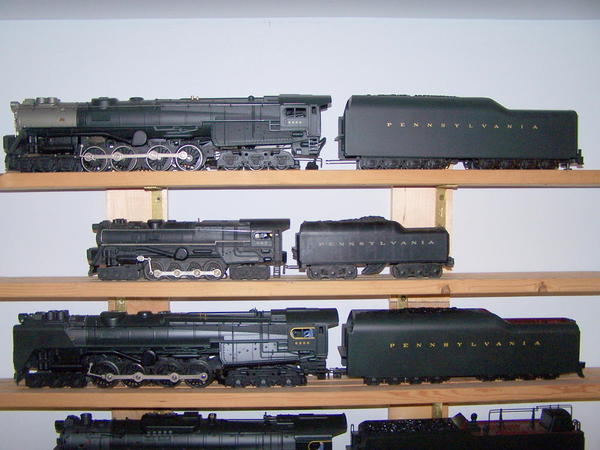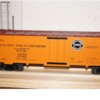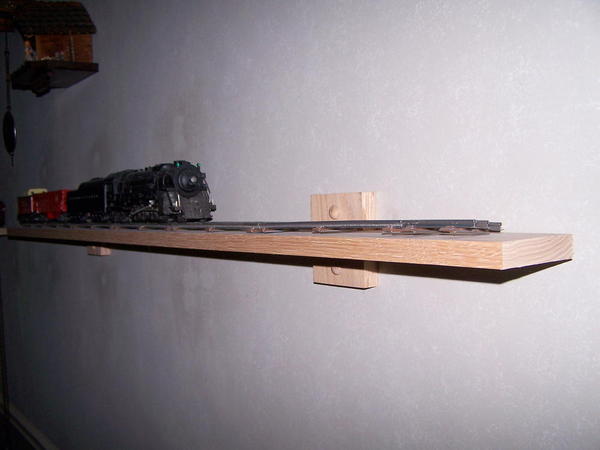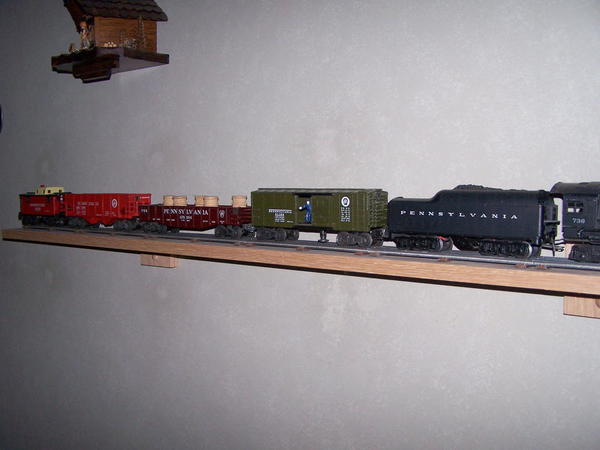Hi All, figured I'd post a quick and easy shelf I made to help organize my son's trains. I plan to make another 4 or 5 so he can keep all his engines and rolling stock up off the ground. It'll be a safe place for me to keep my engine and cars since we do this hobby together. It couldn't be more simple, all you need is a table saw, drill, and pocket hole jig. What I did was, I took a scrap maple board, used my table saw to cut two groves spaced 1 1/8" (O gauge in my case) figured where I wanted it on the wall, marked the board, and used a pocket hole jig to drill 3 holes where the screws will hit the studs once it's in position of where I want it. No shelf brackets needed, and it's held on surprisingly strong. For screws, I used 2 1/2" coarse thread pocket hole screws. To top it off, I drilled a hole on each end and glued in a small dowel piece to prevent cars from rolling off the shelf. It looks kind of lonely up there right now, but after this weekend I'll have a few more hung. So far, I'm happy with the look and function. I cant wait to see how my son likes it when he gets home from school. Here's a few photos of the shelf so you get the idea. I'm sure others have made similar shelves for their trains, hopefully it helps someone out.




















